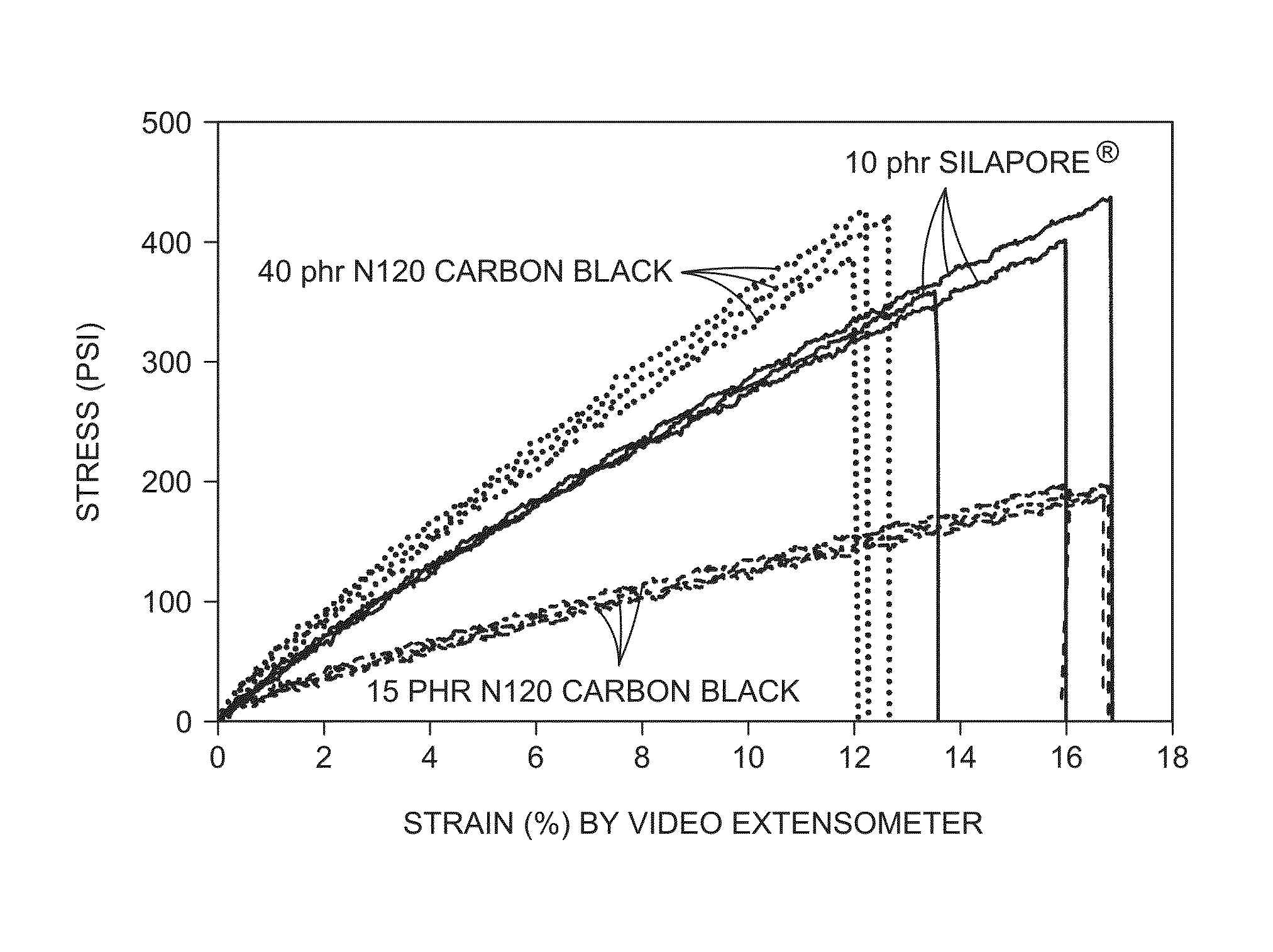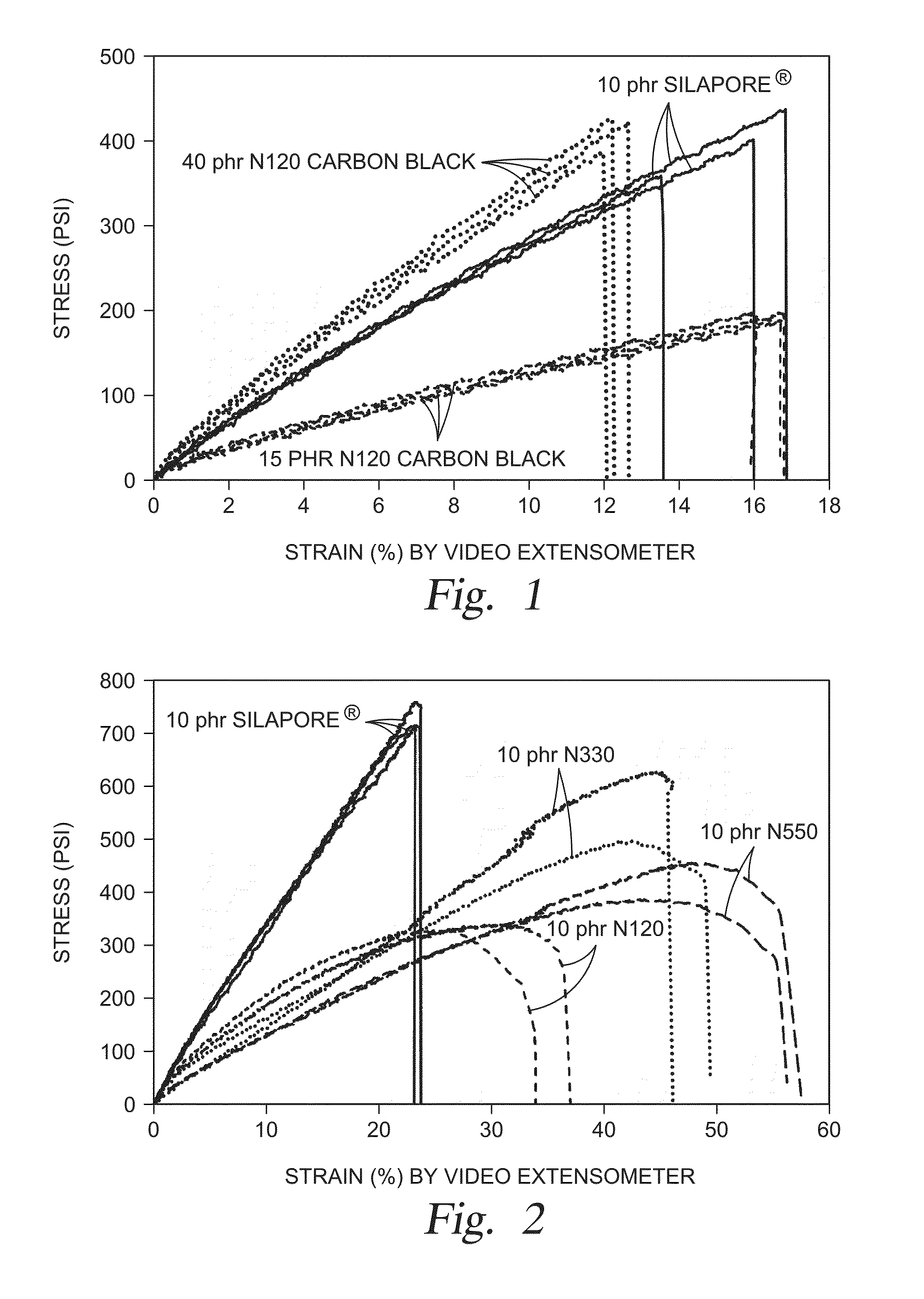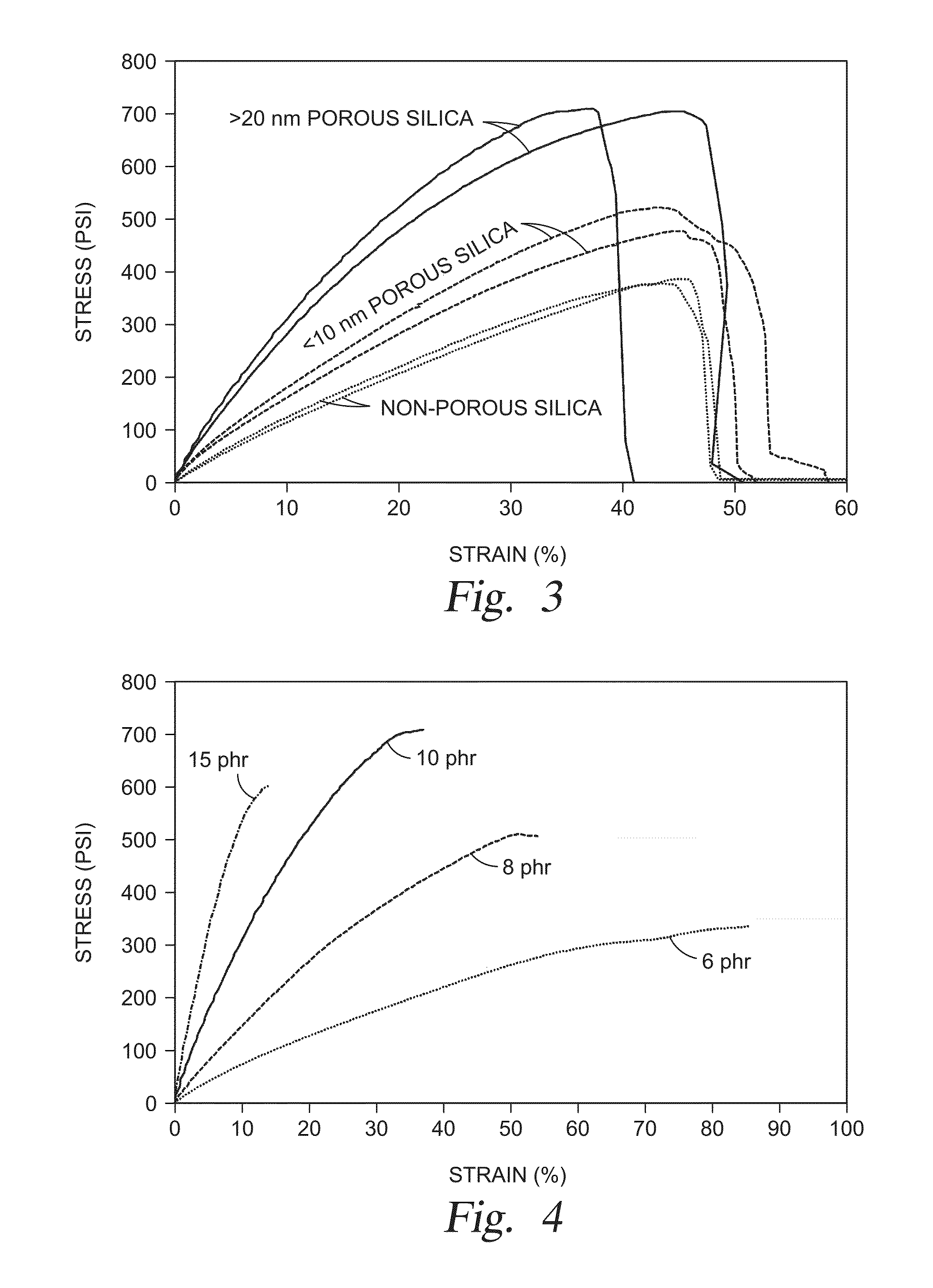Reinforced and crosslinked polyarylenes, methods of manufacture, and uses thereof
a technology of crosslinked polyarylene and reinforced polyarylene, which is applied in the field of reinforced crosslinked polyarylene, methods of manufacture, can solve the problems of reducing reliability, degrading another desired property, and reducing the performance of elastomers
- Summary
- Abstract
- Description
- Claims
- Application Information
AI Technical Summary
Benefits of technology
Problems solved by technology
Method used
Image
Examples
Embodiment Construction
[0025]A detailed description of one or more embodiments of the disclosed composition, apparatus and method are presented herein by way of exemplification and not limitation with reference to the Figures.
[0026]Applicants have found that an addition of mesoporous silicate having an average pore size of 5 nanometers to 50 nanometers to a crosslinked product of polyarylene or a crosslinked product of a polyphenylene sulfide and a polyphenylsulfone significantly enhances the mechanical properties of the crosslinked products. Compared with conventional fillers such as carbon black and nonporous silica, a much smaller amount of mesoporous silicate is needed in order to achieve an optimal mechanical strength for the crosslinked product. In a further advantageous feature, the optimal strength can be achieved without using any binders. Without wishing to be bound by theory, it is believed that polyarylene, polyphenylene sulfide and polyphenylsulfone can at least partially penetrate the pores ...
PUM
| Property | Measurement | Unit |
|---|---|---|
| pore size | aaaaa | aaaaa |
| temperature | aaaaa | aaaaa |
| pore size | aaaaa | aaaaa |
Abstract
Description
Claims
Application Information
 Login to View More
Login to View More - R&D
- Intellectual Property
- Life Sciences
- Materials
- Tech Scout
- Unparalleled Data Quality
- Higher Quality Content
- 60% Fewer Hallucinations
Browse by: Latest US Patents, China's latest patents, Technical Efficacy Thesaurus, Application Domain, Technology Topic, Popular Technical Reports.
© 2025 PatSnap. All rights reserved.Legal|Privacy policy|Modern Slavery Act Transparency Statement|Sitemap|About US| Contact US: help@patsnap.com



